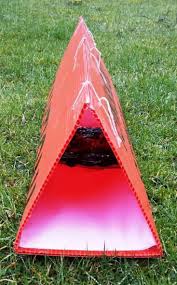ELECTION DIARY Feb 5th: Election Posters – Necessary nuisance or roadside rubbish?
February 5th, 2016
The election posters have been up for three days (four in some premature cases) and the public is responding with the usual mixed feelings. Some advocate that they inform constituents of who is running in their area, and cite research suggesting that they increase the public’s familiarity with candidates. Others complain that they are unsightly and that they are not always disposed of responsibly. After one party’s well-meaning but failed attempt to erect eco-friendly posters in 2009, only corrugated plastic posters are to be seen around the country this month.
But you will not find them everywhere. Some towns and villages have successfully campaigned to have their localities remain ‘poster free zones’ in the run up to the February 26th general election. Ballincollig in Cork North West managed to convince all 12 candidates to refrain from postering in the town. Glenealy in Wicklow received much coverage for their 15 candidates who signed up, while Ferns in Wexford got the commitment of 16 out of 17 candidates. Reports of similar campaigns in Glenties, Donegal and a long running ban in Newmarket-on-Fergus, county Clare have begged questions as to the relevance and appropriateness of petrochemical-derived posters in the age of social media and ecological crisis.
References to election postering on Twitter suggest that they are wasteful and redundant:
With the power of social media, do we really need to litter our streets with election posters? #GE16 #CSR #Environment
— Aoife Malone (@AoifeMaloneDCU) February 1, 2016
question whether the money spent on them could be more wisely invested:
I wish politicians spent the money they waste on posters on a good cause, I know they need to compete, anyone know the poster bill ?#GE16
— Ailish Irvine (@ailieirv) January 28, 2016
and look to other countries’ policies for more constrained poster campaigns:
In France theres designated area for 1 poster per candidate in an area! Simple & less invasive of environment #GE16 https://t.co/6quiRTwnyT
— Pinky #PeoplePower (@cncpinky) February 3, 2016
Despite these comments, the role of posters in extending the reach of the democratic process must not be overlooked. Visual reminders in the environment keep the process of the election in the public eye, and may contribute to a higher voting turnout. Perhaps it is regressive to ban posters nationwide, and we should instead develop durable posters made from sustainably sourced materials, or make better efforts to recycle or even upcycle the posters after use. Plans for all sorts of DIY projects such as mammal footprint tunnels and raised beds made from discarded election posters can be found online. Closing the loop in this way and moving to a more circular economy could someday mean that the same vigour displayed by candidates aiming to be first to have their posters erected, is repeated by schools and community groups undertaking upcycling projects in the aftermath of polling day.

Corrugated plastic mammal footprint tunnel
[x_author title=”About the Author”]







